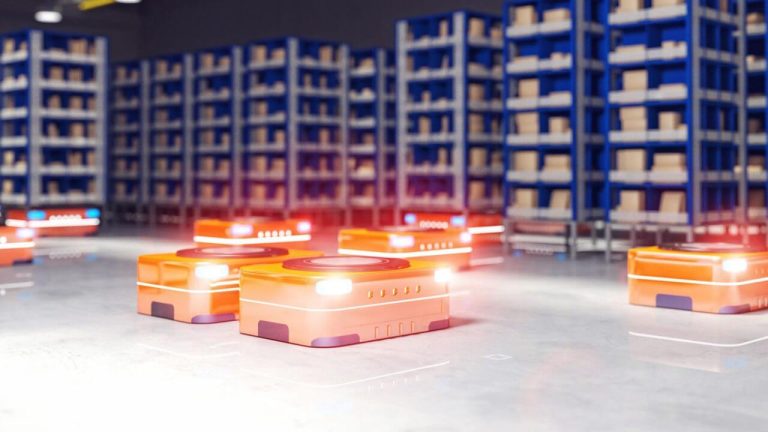
Extreme conditions can provide fertile ground for game-changing innovation, perspective shifts and process reformulation – as underlined by the unprecedented display of business resilience amid the protracted global pandemic. But now is not the time for strategic complacency. Yes, the economic landscape is returning to form, but there is a very real and present opportunity to take the learnings from the pandemic, address longstanding inefficiencies and, to borrow a phrase from political vernacular, build back better.
As the retail sector rebounds to a more regular cadence of activity, 2022 offers a chance for companies across the retail spectrum to do just that, reassess legacy processes and embark on an exciting phase of technological innovation, while addressing new market trends and evolving consumer demands. However, during this period of retail recalibration, the sustainability agenda should be ironclad atop the list of business priorities, both from an environmental and competitive perspective. Here’s how 2022 can be the year of sustainability for retailers.
More sustainable corporate footprint
In addition to lowering CO2 emissions and producing products out of recycled plastic and hemp, many retail organisations are now seriously looking at reducing floor space in head offices to accommodate a hybrid working model, as part of far-reaching efforts to instill a culture of sustainability within. This includes exploring innovative ways that they can facilitate worker flexibility, without impairing the quality of staff output. For larger retailers, this transition to a blended working environment might be relatively straightforward, but for the retailers who had yet to go all-in on digital, or with ageing infrastructure and communications tools, the innovation chasm will feel difficult to bridge. Expleo is passionate about leveling the playing field in this regard, and helping digitally-nascent retailers, or late digital bloomers, navigate the evolving retail landscape with a greater degree of confidence in 2022 and beyond.
More sustainable inventory management
Now more than ever, retailers require best-in-class retail architecture that can drive efficiency gains across a network of stores. This means developing a more sophisticated inventory management system that gives them greater oversight over the entire product lifecycle – allowing for more informed decision making around purchasing, cost-base and warehouse stock, while helping retailers move away from a buy-one/sell-one model. Today, more and more retail organisations are allocating sizable resources to assess their workloads from an end-to-end perspective, from buying and merchandising, to manufacturing, shipping, store delivery, while gauging how they can better utilise their global reach to aid inventory management.

More sustainable logistics
Undoubtedly, supply chain sustainability will be one of the main action items that retailers will be focusing on moving forward. This will extend to the types of vehicles that are used, the frequency with which they are deployed, and the routes that they service. We will also likely see a significant rewiring of logistical IT hardware to interface more closely with transit vehicles, be that planes, trains or automobiles – with a proliferation of data-rich RFID (Radio-frequency identification) tags tracking the movement of products and ensuring air-tight efficiency and resource allocations. The days of empty lorries being ferried back to the depot are over – so expect to see much more well-oiled and learnt logistics frameworks to take shape, with greater collaboration between organisations to maximize the network effect.
Ensure sustainable footfall
Online retail was already in the ascendancy pre-pandemic – a trend that has been continuously compounded by pandemic-induced restrictions. As a result, retailers now have a major job to do in terms of attracting droves of customers back to the high street, and reinstating shopping habits en masse. However, to do so effectively will require a thorough evaluation of customer expectations, as today’s breed of savvy digital natives are demanding more from brands in terms of real-life engagement and tailored experiences. In tandem with implementing user-friendly ‘Click-and-Collect’ options for customers, the in-store experience on arrival needs to be compelling, and it is incumbent on retailers to leverage the litany of innovative tech solutions available to create the most user-centric retail journey possible. Being able to provide a Click-and-Collect service can only happen if you have a very tight control over your stock, which goes back to our earlier point around inventory management. Some of these innovations will see Wi-Fi data and barcodes being leveraged to facilitate hyper-targeted product placements, allowing brands and vendors to execute dynamic promotions that drive ROI.
More sustainable collaborations
Retailers can’t depend entirely on internal business data to chart an agile growth strategy anymore. Establishing a more data-driven understanding of core demographics is now possible, through privacy-enabled collaborations between partner organisations, and even competitors. It might sound counterintuitive – particularly when we consider today’s regulatory minefield – but data-led collaborations between competitors can be carried out in a regulatory-compliant fashion, thanks to innovations in Privacy-Enhancing Technology (PET). These collaborations can deliver mutually beneficial insight gains to accentuate profiling capabilities, and in turn, facilitate more targeted customer outreach for retailers. With PET now allowing competing retailers to securely identify overlapping customers without falling foul of privacy regulations or compromising customer’s Personally Identifiable Information (PII), what was once considered the forbidden portal is now wide open. I suspect PET-driven collaborations of this ilk will become par for the course in 2022.
As we hopefully close the chapter on COVID-19 and launch into 2022 with vigour, it is crucial that growth strategies are rooted in sustainability. Forging a truly sustainable path will undoubtedly require a perspective SHIFT, but one that can help retailers establish greater partnership synergies, build brand equity among eco-conscious customers and deliver more customer-centric service delivery.
By Richard Hartshorne, Business Unit Director for Enterprise Markets at Expleo, a trusted partner for end-to-end, integrated engineering, quality services and management.





